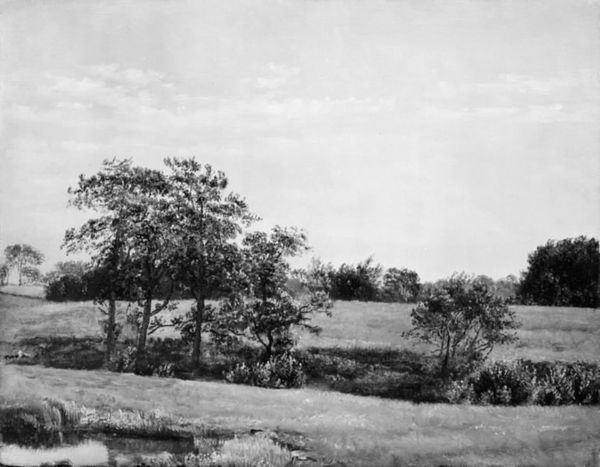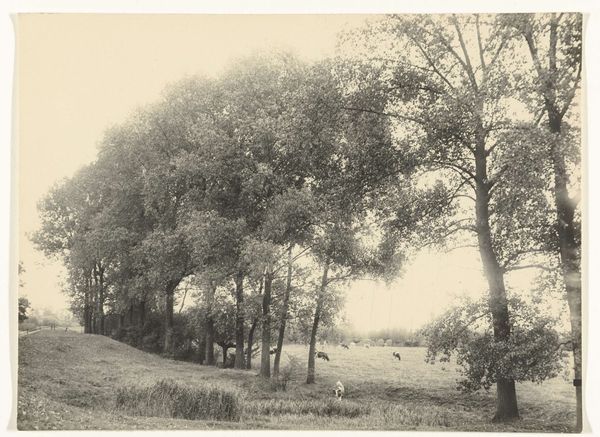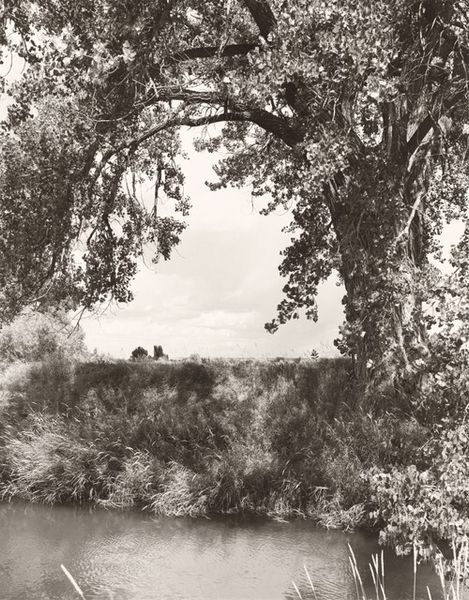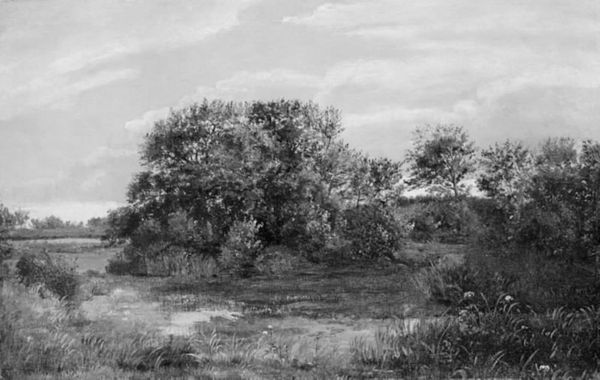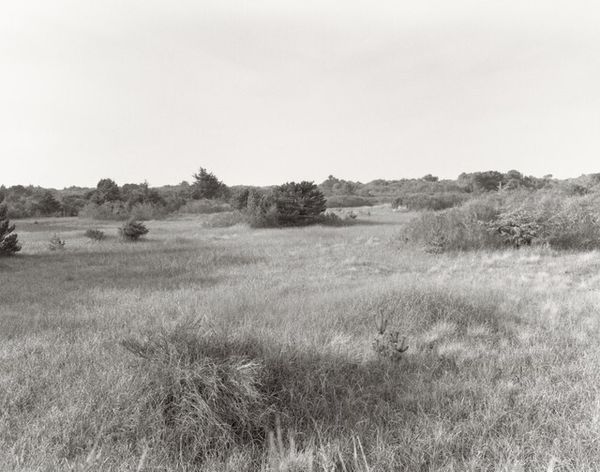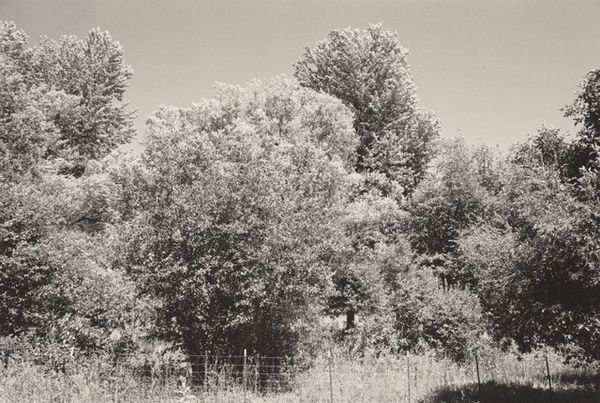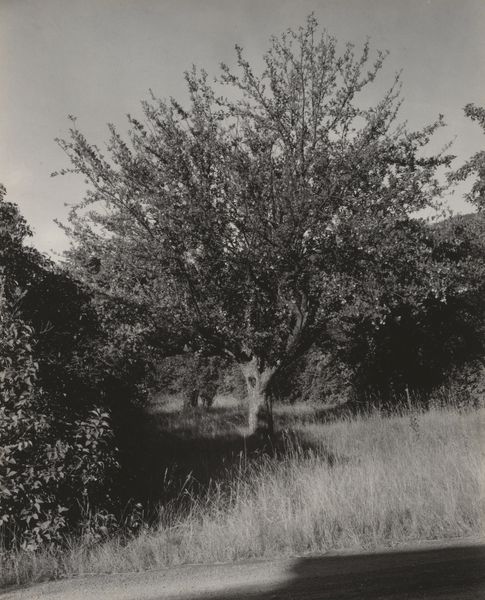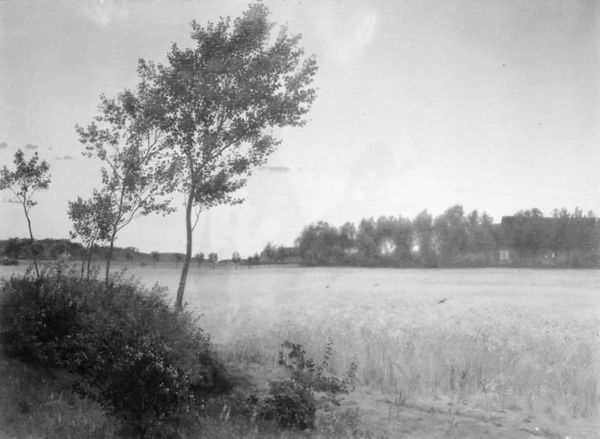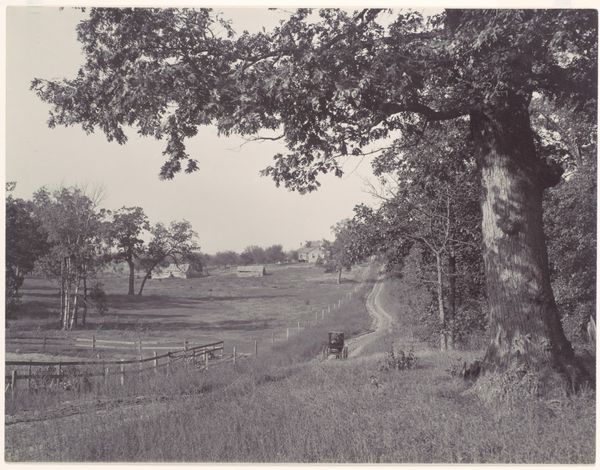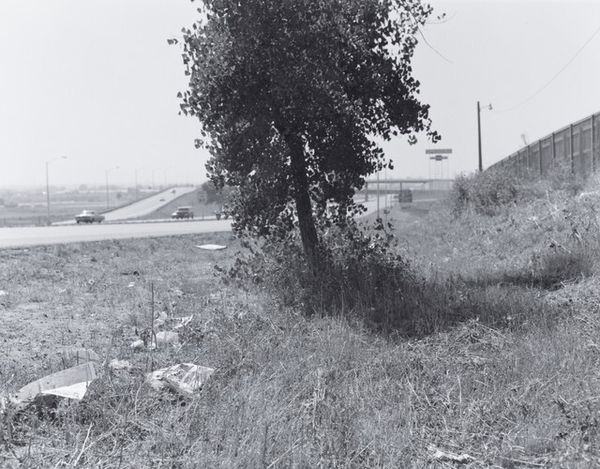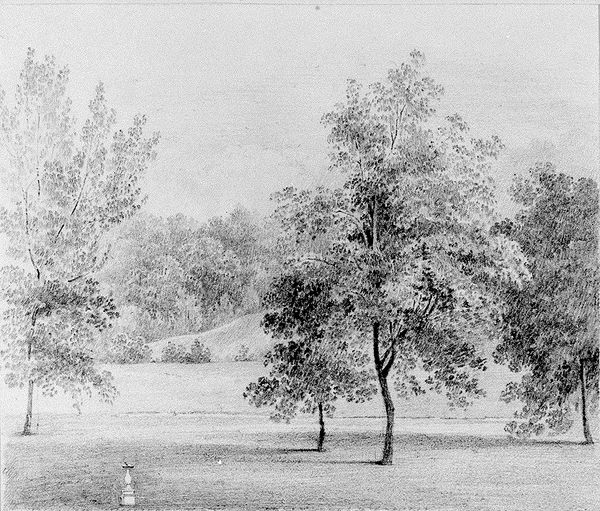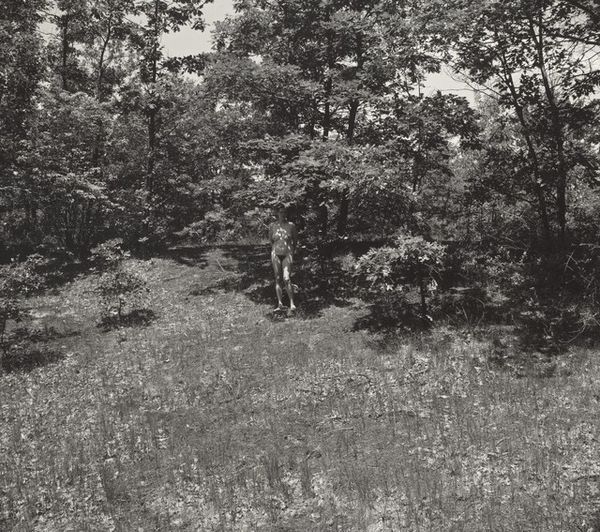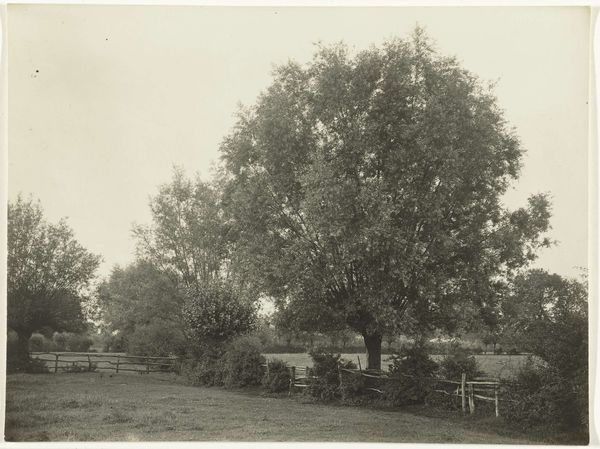
photography, gelatin-silver-print
#
black and white photography
#
landscape
#
black and white format
#
photography
#
black and white
#
gelatin-silver-print
#
monochrome photography
#
monochrome
Dimensions: image (and sheet): 22.7 × 28.7 cm (8 15/16 × 11 5/16 in.) mount: 35.5 × 39.5 cm (14 × 15 9/16 in.)
Copyright: National Gallery of Art: CC0 1.0
Curator: Robert Adams’ “South of Arriba, Colorado,” a gelatin-silver print made sometime between 1969 and 1980. My first reaction? There's a quiet sadness. It feels like a forgotten space. Editor: Forgotten is the right word. Adams’ landscapes often capture this sense of melancholic intersection, that of a space in-between the romanticised ideals of untouched nature and the blunt realities of American expansion and exploitation. Look how the trees, though providing a semblance of 'nature', frame an abandoned structure, almost consumed by light, with a rudimentary fence line delineating ownership. Curator: I keep coming back to that old bicycle leaning against the tree. It feels incredibly symbolic—a remnant of childhood freedom now caught within these stark lines, hemmed in by both the landscape and maybe something less tangible. It feels kind of lonesome, no? Editor: Definitely. And considering Adams’ practice of documenting the changing landscape of the American West, especially its suburban sprawl and ecological impact, that bicycle becomes a powerful emblem. A symbol of simpler times maybe, overshadowed by this muted palette and the overarching atmosphere of decline, suggesting a critique of unsustainable progress and its encroachment on personal narratives, individual liberties and collective memories. Curator: Do you think the absence of people is as important as their ghosted presence? What stories aren't being told? Editor: Absolutely. That absence is incredibly telling, pushing us to consider whose stories matter in the grand narrative of land ownership and so called "development". Who benefits and who pays the price, right? The silence feels deliberate. It encourages reflection. In it I see a quiet protest against a system that has historically marginalised certain voices and perspectives. It evokes a feeling of environmental responsibility, inviting contemplation of the interconnectedness of social, ecological, and personal narratives within a given geography. Curator: You’ve shifted the entire experience for me. What I felt intuitively, this forgotten beauty, this sadness—becomes consciously critical, socially aware, dare I say… hopeful. Editor: Exactly, hope is key. Adams' photos invite us to consider not only what has been lost, but what could still be preserved or reimagined. That's a dialogue worth having, don’t you think?
Comments
No comments
Be the first to comment and join the conversation on the ultimate creative platform.

